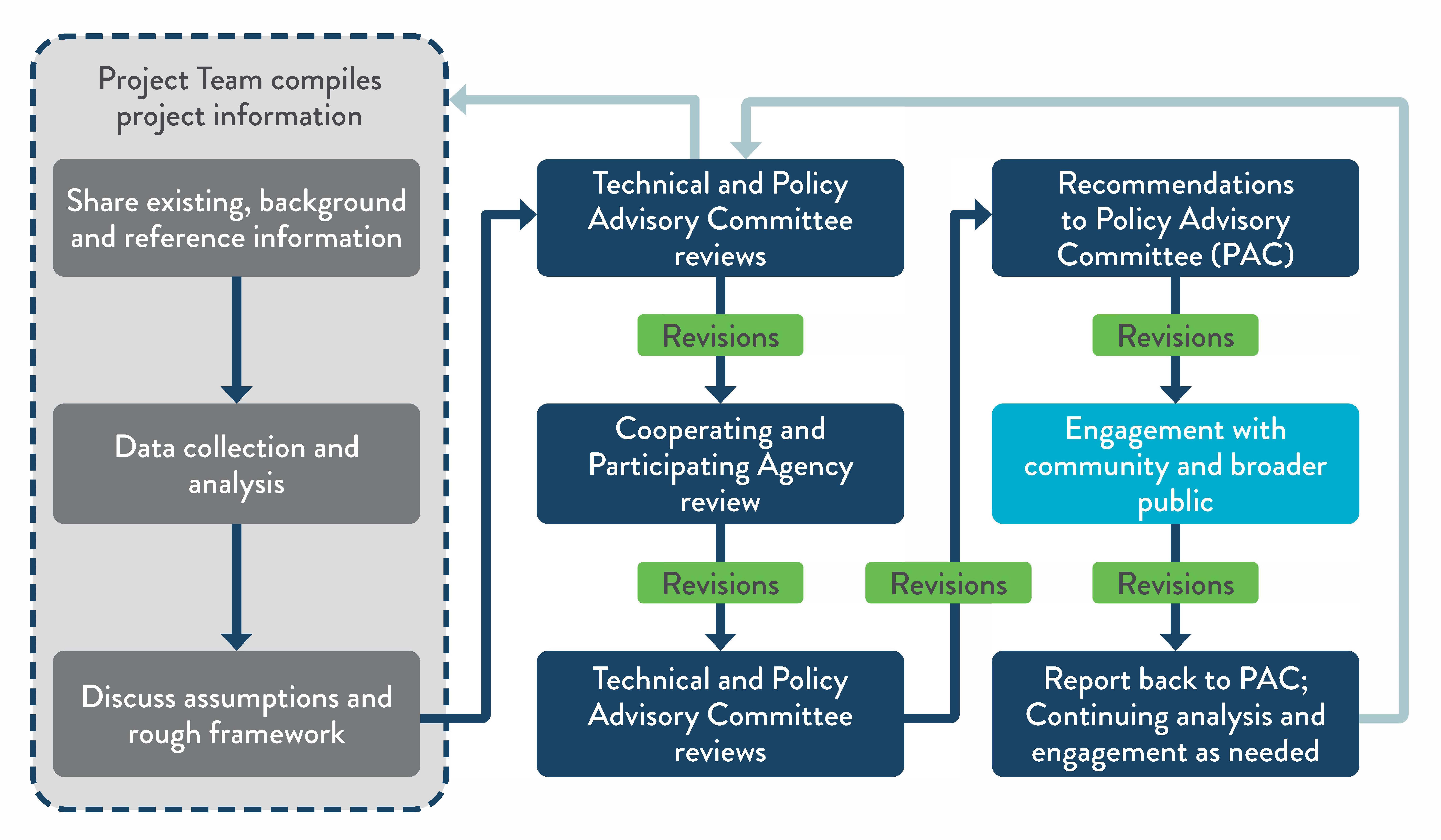Project committee process

View full-size image
Below is information regarding the various project committees and how they function in the larger Environmental Impact Statement (EIS) project process.
Technical documents that form the basis of the Scoping Decision Document are developed by project staff then reviewed by committee before review by the broader public.
- Share existing, background and reference information: MnDOT staff and consultant project team members review background and reference information collected during Phase 1 or provided by city and county project partners.
- Data collection and analysis: Project team members identify what new data is needed. For example, new traffic data can be collected on the interstate, entrance or exits ramps, or adjacent street network. The team collects and analyzes the data.
- Discuss assumptions and rough framework: The project team discusses any assumptions made in the analysis and starts to develop a rough framework of the technical document.
- TAC/PAC review: See committee description below for more information.
- Revisions: The project team presents information, gathers feedback, and revises the draft at each step in the process.
- Cooperating and Participating Agency Review: The draft is shared with the Cooperating and Participating Agencies as required under the National Environmental Policy Act. Cooperating agencies are Federal agencies with jurisdiction not including the lead agency. Participating agencies are those with an interest in the project. Their roles are defined by the Council on Environmental Quality which oversees the NEPA implementation.
- Revisions: The project team presents information, gathers feedback, and revises the draft at each step in the process.
- TAC/PAC review: See committee description below for more information.
- Revisions: The project team presents information, gathers feedback, and revises the draft at each step in the process.
- Recommendations to Policy Advisory Committee: The project team presents the draft to the Policy Advisory Committee (PAC). The PAC consists of elected and appointed officials who guide policy and funding decisions, review recommendations from technical staff, provide input on public engagement and identify important community issues. Current PAC members include Federal Highway Administration Minnesota Division, Metropolitan Council Chair, county commissioners, mayor and city council members, and state senators and representatives.
- Revisions: The project team presents information, receives feedback and revises the draft.
- Engagement with community and broader public: The project team presents the technical information to the public in both its technical document form and in plain language format. Online and in-person engagement opportunities will provide opportunities for the project team to learn from the community’s lived experiences.
- Revisions: The project team presents information, gathers feedback, and revises the draft at each step in the process.
- Report back to PAC; Continuing analysis and engagement as needed: The project team reports back to the PAC following the broader public engagement. Analysis, revision and further engagement continue. The technical information becomes a base for the Scoping Decision Document that also flows through the committee and public review cycles.
